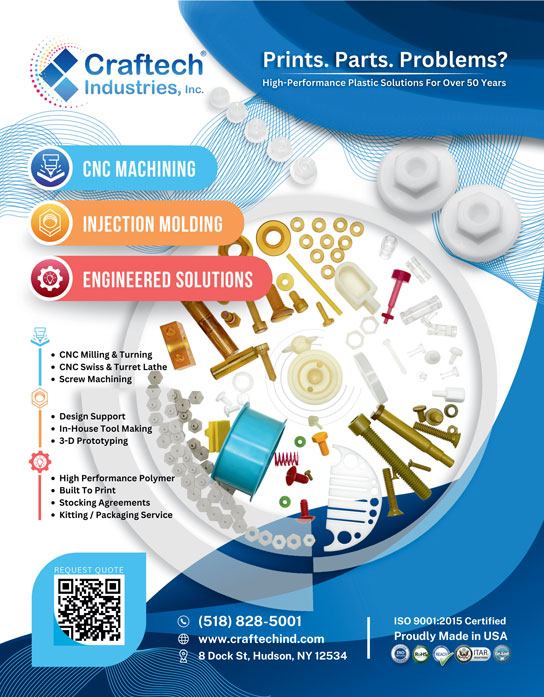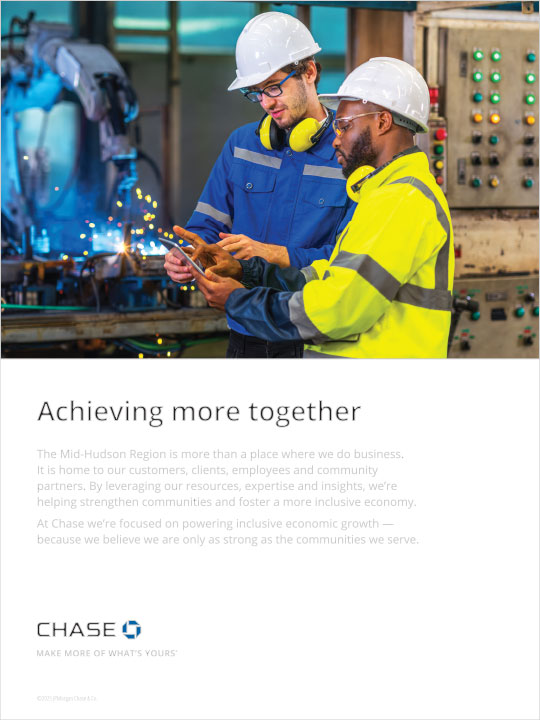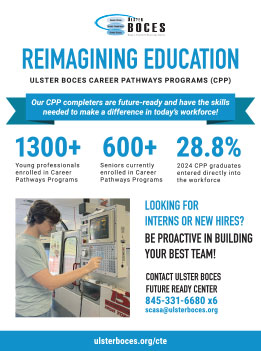NEWS, RULES, REGULATION AND LEGISLATION
THE MANUFACTURING ECONOMY
Global Manufacturing Growth Remains Weak At End Of Opening Quarter
The global manufacturing sector ended the opening quarter of the year on a lackluster footing. At 50.3 in March, the J.P.Morgan Global Manufacturing PMI® – a composite index produced by J.P.Morgan and S&P Global Market Intelligence in association with ISM and IFPSM – was down from 50.6 in February and signalled only a slight improvement in overall operating conditions for the third month in a row. Global manufacturing output increased for the third successive month in March, although the rate of growth was the weakest during that sequence. Production rose in the consumer and intermediate goods industries but fell for the ninth time in the past ten months in the investment goods category.
Rising concerns about the geopolitical situation, high costs and possible disruption to world trade flows from tariffs all hurt business optimism in March. Confidence fell to a three- month low and eased across the consumer, intermediate and investment goods industries. Reduced optimism about the outlook was a major factor underlying an eighth successive month-on-month decrease in global manufacturing employment. Job losses in the euro area and the UK (among others) were only partly offset by increases in mainland China and Japan. No change was signalled in U.S. staffing levels.
NAM Outlook Survey: Trade Policies Shake Up Manufacturers’ Economic Outlook
Manufacturers are increasingly worried about the future of trade and rising raw material costs, according to the Q1 2025 NAM Manufacturers’ Outlook Survey. In the survey conducted from Feb. 11 to Feb. 28, trade uncertainties moved to the top of the list of manufacturers’ concerns—with 76.2% of respondents citing them as their primary worry. Increased raw material costs came in second, cited by 62.3% of those surveyed.
- Manufacturers expect prices on their companies’ product lines to go up by 3.6% in the next year, an increase from 2.3% in Q4 2024 and the highest since Q3 2022, when inflation was more than 8%.
- Manufacturers also anticipate the cost of raw materials and other inputs to rise 5.5% in the next year, the highest expected rate of increase since Q2 2022, when inflation was between 8% and 9%.
- Manufacturers foresee export sales to increase just 0.1% in the next year. That’s the lowest anticipated rise since Q2 2020 at the height of the COVID-19 pandemic.
- The percentage of manufacturers with a positive outlook for their company inched down from the last quarter to 69.7% from 70.9%.
Manufacturers also feel strongly that their businesses need the “rocket fuel” of the tax reform extension. If Congress fails to extend pro-manufacturing provisions of the Tax Cuts and Jobs Act of 2017:
- 45.23% would delay hiring.
- 44.72% would pause operations expansions.
- 41.71% would limit R&D investment; and
- 40.20% would curb employee wages or benefits increases.
NAM President and CEO Jay Timmons wrote in a social post Thursday: “We are calling for a comprehensive manufacturing strategy that includes a commonsense trade policy in addition to making President Trump’s 2017 tax reforms permanent and more competitive, securing regulatory certainty, expediting permitting reform to unleash American energy dominance and key manufacturing projects and increasing the talent pool.”
OECD: Trade War To Sap Global Growth
President Donald Trump’s tariff hikes will drag down growth in Canada, Mexico and the United States while driving up inflation, the OECD forecast in March, cutting its global economic outlook and warning that a broader trade war would sap growth further. In the case of a generalized trade shock, not only will U.S. households pay a high direct price, but the likely economic slowdown will cost the United States more than the extra income the tariffs are supposed to generate, the Organization for Economic Cooperation and Development estimated in its interim outlook. Global growth is on course to slow slightly from 3.2% in 2024 to 3.1% in 2025 and 3.0% in 2026, the Paris-based policy forum said, cutting its projections from 3.3% for both this year and next in its previous economic outlook, issued in December.
The organization updated its forecasts assuming tariffs between the United States and its neighbors are raised an extra 25 percentage points on almost all goods imports from April. As a result, U.S. economic growth was seen slowing this year to 2.2% before losing more steam next year to only 1.6%, the OECD said, cutting its forecasts from 2.4% and 2.1% previously. But the Mexican economy would be hit hardest by the tariff hikes, contracting 1.3% this year and a further 0.6% next year instead of growing 1.2% and 1.6% as previously expected. Canada’s growth rate would slow to 0.7% this year and next, well below the 2% previously forecast for both years.
The Conference Board Leading Economic Index® (LEI) for the US Fell Further in February
The Conference Board Leading Economic Index® (LEI) for the U.S. declined by 0.3% in February 2025 to 101.1 (2016=100), after a 0.2% decline (revised from –0.3%) in January. Overall, the LEI fell by 1.0% in the six-month period ending February 2025, less than half of its rate of decline of –2.1% over the previous six months (February–August 2024.) “The U.S. LEI fell again in February and continues to point to headwinds ahead,” said Justyna Zabinska-La Monica, Senior Manager, Business Cycle Indicators, at The Conference Board.
- Consumers’ expectations of future business conditions turned more pessimistic. That was the component that weighed down most heavily on the Index in February.
- Manufacturing new orders, which improved in January, retreated and were the second largest negative contributor to the Index’s monthly decline.
- On a positive note, the LEI’s six-month and annual growth rates, while still negative, have remained on an upward trend since the end of 2023, suggesting that headwinds in the economy as of February may have moderated compared to last year.
- However, given substantial policy uncertainty and the notable pullback in consumer sentiment and spending since the beginning of the year, we currently forecast that real GDP growth in the U.S. will slow to around 2.0% in 2025.”
Empire State Manufacturing Survey: Business Conditions ‘Dropped Significantly’ in March
Business activity dropped significantly in New York State in March, according to firms responding to the Empire State Manufacturing Survey. The headline general business conditions index fell twenty-six points to -20.0.
- The new orders index fell twenty-six points to -14.9,
- The shipments index fell twenty-three points to -8.5, indicating that both orders and shipments declined after increasing last month.
- The inventories index moved up five points to 13.3, its highest reading in more than two years, signaling that business inventories continued to expand.
- The index for number of employees held steady at -4.1, and the average workweek index was -2.5, pointing to a slight decline in both employment and hours worked.
- The prices paid index rose five points to 44.9, its highest level in more than two years,
- The prices received index rose three points to 22.4, its highest reading since May 2023.
- After dropping fifteen points last month, the index for future business activity fell another ten points to 12.7.
- Capital spending plans remained soft. Input price increases are expected to remain significant, and supply availability is expected to contract somewhat in the months ahead.
CLIMATE, ENVIRONMENT, SAFETY and HEALTH
NAM: President’s Executive Order Strengthens U.S. Manufacturing by Accelerating Permitting and Unlocking Critical Resources
Following President Donald Trump’s March 20, 2025 executive order to accelerate permitting and expand access to critical resources for manufacturing, National Association of Manufacturers President and CEO Jay Timmons released the following statement:
“For too long, red tape and burdensome regulations have stood in the way of the basic building blocks that power manufacturing in the United States, especially mining and processing the minerals manufacturers rely on to create jobs and dominate on the world stage. The administration is addressing those barriers, making it easier for manufacturers to access the resources we need to build the future in America.
“A comprehensive manufacturing strategy—one that cements America’s position as the manufacturing superpower—depends on smart permitting reforms like the ones the administration is advancing. When manufacturers in the United States can invest with certainty, they plan, hire and win—and when manufacturers win, America wins. We look forward to continuing to work with his National Energy Dominance Council, under the leadership of Secretary of the Interior Doug Burgum and Secretary of Energy Chris Wright, to Make America Great for Manufacturing Again.”
OSHA Launches Severe Injury Report Dashboard
On September 4, OSHA unveiled an online tool giving users the ability to search its severe injury report database and view trends related to workplace injuries occurring in states covered by federal OSHA. The Severe Injury Report dashboard allows users to search and download data by year, industry, state, establishment name and Occupational Injury and Illness Classification System codes. The dashboard includes information on all severe injuries reported by employers covered under federal OSHA since 2015.
Federal law requires employers to notify OSHA of a work-related in-patient hospitalization, amputation or loss of an eye within 24 hours of the incident. The agency’s compliance assistance specialists and on-site consultations are available across the country and in U.S. territories to help employers. OSHA encourages workers and employers to use the dashboard to learn how severe injuries happen in their industries and use the agency’s available resources to help prevent workplace injuries.
State Releases Initial Rules For Cap-And-Invest Program
March 19th, the Department of Environmental Conservation released long-awaited draft rules for how and when major companies would need to report their greenhouse gas emissions under the proposed cap-and-invest program. While the reporting rules aren’t enough to get the program actually up and running, and don’t set any standards for the emission caps that companies can hit before they must start buying carbon credits, environmental activists consider the release of the draft reporting rules a meaningful step forward in the process.
The new draft reporting rules would require companies to begin keeping track of their emissions in 2026, with the first reporting deadline coming in June 2027 for the previous year. The draft rules lay out which companies would be required to report emissions under the program. Those include facilities that produce at least 10,000 metric tons of carbon dioxide equivalent, such as landfills and natural gas compression stations, suppliers of natural gas in the state, waste haulers and electric power plants. The public will have the opportunity to comment on the draft reporting rules between April 2 and July 1, and environmental advocates plan to actively engage during the open comment period.
EPA Reconsiders Dozens of Burdensome Regulations
EPA Administrator Lee Zeldin said in a March press release and, Wall Street Journal op-ed, that he intends to take swift action to review and potentially rescind regulations that were hamstringing manufacturers and needlessly driving up costs across the board. The NAM in December called on President Trump to reverse the regulatory onslaught of the past four years. NAM-recommended actions included in yesterday’s EPA announcement included reconsideration of the following:
- NAAQS for PM2.5: Last year, the Biden administration tightened the primary annual standard for particular matter—more commonly known as soot—to an untenable 9 micrograms per cubic meter from 12 micrograms per cubic meter. Manufacturers found to be in nonattainment of these standards will now be denied permits for new and expanded facilities.
- Power plant rules: The previous administration’s emissions regulations on existing coal-fired and new natural gas–powered power plants include an unrealistic timeline for the widespread adoption of expensive, unproven new technology; this regulation threatens grid reliability and the ability of manufacturers to receive power for their operations.
- Vehicle regulations: Current regulations of light-, mediumand heavy-duty vehicles impose costly hardships on auto manufacturers.
- Waters of the United States: The last administration had made the scope of the Clean Water Act overly broad, resulting in high costs and even slowed permitting processes.
LABOR, EMPLOYMENT AND WORKFORCE DEVELOPMENT
US Manufacturing Labor Productivity Barely Nudges Higher On Fewer Hours Worked. Overall Workforce Productivity Up 1.5% In Q4
U.S. labor productivity grew at a 1.5% annualized rate in the fourth quarter of 2024, an upward revision from the initial estimate of 1.2%, per data from the Bureau of Labor Statistics. For the full year, productivity increased 2.7%. Unit labor costs rose 2.2% in the fourth quarter, while hourly compensation climbed 3.8%.
Manufacturing sector labor productivity increased 0.3 percent in the fourth quarter of 2024, as output decreased 1.3 percent and hours worked decreased 1.6 percent. In the durable manufacturing sector, productivity decreased 1.1 percent, reflecting a 3.2-percent decrease in output and a 2.1-percent decrease in hours worked. Nondurable manufacturing sector productivity increased 1.4 percent, as output increased 0.6 percent and hours worked decreased 0.8 percent. Total manufacturing sector productivity increased 0.4 percent from the same quarter a year ago.
Unit labor costs in the total manufacturing sector increased 3.7 percent in the fourth quarter of 2024, reflecting a 4.0-percent increase in hourly compensation and a 0.3-percent increase in productivity. Manufacturing unit labor costs increased 2.0 percent from the same quarter a year ago. Manufacturing sector labor productivity has grown at an annualized rate of 0.3 percent during the current business cycle, as output was unchanged (0.0 percent) and hours have declined 0.3 percent. The 0.3-percent annualized rate of productivity growth in the current business cycle thus far is above the 0.1-percent rate of the previous business cycle from the fourth quarter of 2007 through the fourth quarter of 2019 and is below the long-term rate of 2.1 percent since the first quarter of 1987.
Only Half Of Employees Say They Are Paid Fairly
Only 54% of employees believe they are paid fairly and 39% believe their company’s pay rates are below industry norms, prompting renewed questions about pay equity and transparency, according to a survey of 1,878 U.S. and UK employees conducted by compensation platform beqom. Women were less confident about their compensation, with only 49% saying they are fairly compensated compared with 59% of men. Meanwhile, less than half of employees said their salary was adjusted to match inflation last year, and about one-third of survey respondents said new hires at their company are making more than tenured employees.
Sixty-two percent of employees said they don’t know how their total compensation is calculated, and 46% said lack of transparency about pay is a top issue for them at work. Employees overwhelmingly support initiatives like equal opportunities for career growth (78%) and fostering inclusive leadership (67%), the survey found. More than half of employees said their employer shared DE&I goals, but only 38% received updates on progress in 2024.
Five Years On: How Covid Changed The Workplace
Do you remember where you were on March 11, 2020? Five years ago today, the World Health Organization declared Covid-19 a pandemic, sending workers home from the office and shuttering businesses worldwide. Since then, we’ve experienced a shifting job market, expectations and locations. What began as an employee-friendly job market amid “The Great Resignation” has turned into one where employers are holding the purse strings and workers are feeling as unmotivated as ever.
This uncertainty has led to the rise of “The Great Detachment,” what experts are calling this period of falling employee engagement, satisfaction and choice. At its core is “the manager squeeze,” says Jim Harter, chief scientist of workplace management and well-being at Gallup, who just published an analysis of the last five years. “How people are managed on a daily basis is more important” than hybrid work policies, he says. “The role of first leadership is saying ‘here’s the culture that we want, and here’s how our practices are going to reinforce that culture that we want,’ and then to articulate it in a way that’s clear to employees.” But how to do that when many folks have been forced to do more with less?
Hudson Valley Job Count Bumped Higher in February, Manufacturing Up by 500
Over the past year, the private sector job count in the Hudson Valley rose by 6,800, or 0.8 percent, to 817,500 in February 2025. The greatest gains were in private education and health services (+3,400), leisure and hospitality (+2,900), professional and business services (+2,000), trade, transportation and utilities (+1,600), financial activities (+600), other services (+200). Losses occurred in mining, logging and construction (-3,200) and information (-1,200).
- Manufacturing employment in the Valley increased by 500 to 41,000 in February 2025 from 40,400 in January and 40,500 in February 2024.
- Statewide Manufacturing employment increased by 300 to 410,900 in February 2025 from 410,600 in January but declined by 2,900 from February 2024.
- Nationally Manufacturing employment increased by 37,000 to 12,711,000 in February 2025 from 12,674,000 in January but declined by 89,000 from February 2024.
Immigration Accounts for Entire U.S. Population Growth for First Time: Survey
For the first time since records began, immigration was the sole driver of the United States’ population growth in a single year, a new study said. The nonpartisan Migration Policy Institute (MPI) looked at U.S. Census Bureau data for 2022-2023, the latest available, finding that falling American birthrates factored into the change. The U.S. immigrant population grew by 1.6 million between 2022 and 2023 to 47.8 million, according to the MPI analysis, with immigrants now representing a 14.3 percent share of the overall population — the highest ever.
In 2023, birth rates among American women reached a record low for those aged between 20 and 24, while the rate also dropped overall for the larger group of 20-39 year olds, according to the Centers for Disease Control and Prevention. The findings come at a time when immigration, particularly illegal immigration, is a key focus of the current White House administration. While plans for mass deportations are being carried out, the other obstacle — a collapsing fertility rate — has been far more vexing for officials, both in the U.S. and other developed nations suffering from the same dynamic.
Agentic AI Could Boost Busy Employees’ Morale
Josh Bersin, a prominent HR technology analyst, describes agentic AI as the next wave of artificial intelligence. He says these digital teammates can autonomously handle tasks: “Instead of just answering questions and composing poetry, they’re now able to ‘do things’ on our behalf,” writes Bersin. Like human employees, they require onboarding, training and governance to ensure effectiveness and security. “These agents will actually belong in the organization chart,” according to Bersin. “And our job will be to manage them, make sure they’re safe and watch over their security.”
A 2024 Asana report revealed that 54% of knowledge workers’ time is spent on busy work—repetitive administrative tasks that AI agents can automate. Agents also show promise for leadership teams—HR Executive’s recent What’s Keeping HR Up at Night? survey found that administrative and operational tasks were the number one area where HR leaders report spending their time. Automating tasks like meeting notes and status updates—which can consume at least half a day per week—not only saves time but also alleviates the “tax on morale” these activities impose.
LABOR, EMPLOYMENT AND WORKFORCE DEVELOPMENT
2025 Award Breakfast and Workforce Developer’s Expo April 25th
The Manufacturing Champions Award recognizes those individuals and organizations, who through vision, dedication, hard work and tireless involvement have helped to overcome some of the many obstacles faced by manufacturers in the Hudson Valley community, and in so doing they have made it possible for manufacturers and their employees to prosper.
Join us in celebrating this year’s honorees and their impactful contributions to the community.

The 2025 Champions Are
Gretchen Zierick – President Zierick Manufacturing
—and—
Thomas Fassell – Science Teacher, Marlboro High School

The Event begins at 7:45 am with the Manufacturing Workforce Developers Expo. The Workforce Developer’s Expo includes educators, students, non-profits, economic development and county partners actively engaged in training the future manufacturing workforce. The expo allows attendees to see the great work being done to build and develop the skilled pipeline necessary for manufacturers’ success.










